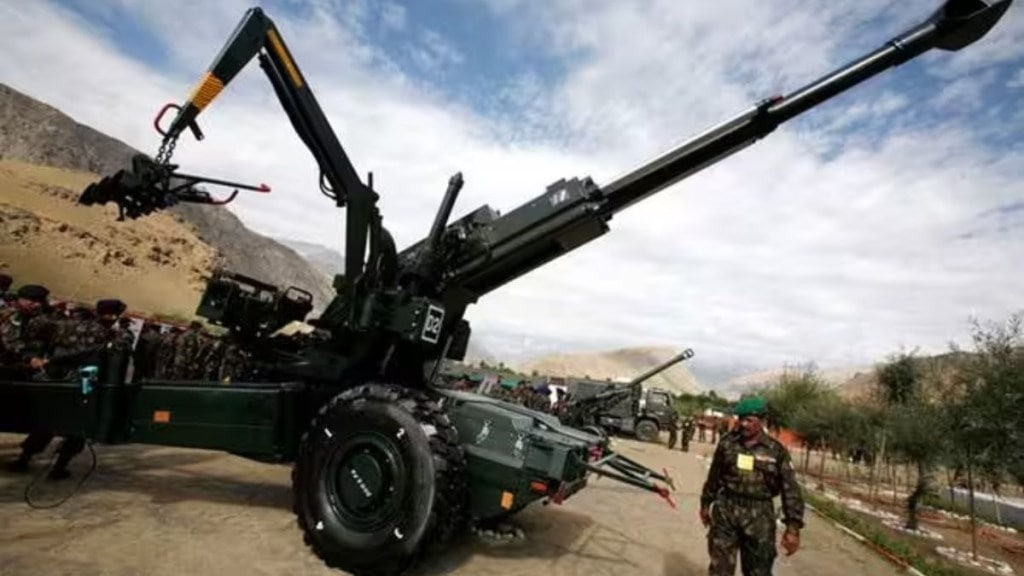The Indian artillery unleashed a relentless barrage, firing over 2,50, 000 shells, bombs, and rockets during the Kargil conflict in 1999. The strategic deployment of approximately 300 guns, mortars, and MBRLs fired around 5,000 artillery shells, mortar bombs, and rockets daily. The pivotal moment came when a staggering 9,000 shells were launched on the day Tiger Hill was reclaimed.
The game-changer in the Kargil war was undoubtedly the Bofors guns. Swiftly firing three rounds in just 12 seconds, these guns proved their mettle, effectively targeting enemy posts situated perilously close to Pakistani soldiers who had occupied the hilltops. The Bofors guns, known for their unrivaled precision, played an unprecedented direct-fire role, causing significant casualties on the Pakistani forces.
Amidst controversies surrounding the Bofors deal in 1986, when India procured 400 howitzer guns from the Swedish company AB Bofors, the true valour of these guns was showcased during the Kargil war in 1999. Although the deal led to a political upheaval due to allegations of corruption, the Bofors guns redeemed their image as they emerged as the real heroes on the battlefield.
The high-altitude terrain in the Kargil sector, most of which lies above 8,000 feet, posed significant challenges for artillery power. With limited use of the air force allowed, the Indian Army had an arduous task ahead. Flushing out Pakistani soldiers, predominantly from the Northern Light Infantry regiment, who were executing a well-thought military plan to capture key posts, demanded unwavering determination.
“The Bofors guns, with their impressive range of over 35 km, proved to be the game-changer. They efficiently targeted enemy posts at almost a 90-degree angle, operating stealthily from within proximity of Pakistani soldiers occupying the hilltops. Their ability to fire three rounds in just 12 seconds proved instrumental in neutralizing enemy positions, significantly tipping the scales in India’s favour,” explains a former Indian Army officer to Financial Express Online.
Performance of the Bofors Guns
The 155 mm FH77 Bofors guns outperformed any medium artillery available to the Pakistani Army, rendering their attempts to challenge the Indian forces futile. This superiority allowed the Indian Army to maintain an edge during every exchange of fire along the Line of Control (LoC) until the ceasefire agreement was signed in 2003.
Deployed at altitudes of 10,000-13,000 feet, the Bofors guns continue to serve as a potent reminder to the Pakistan Army of their vulnerability. Upgraded since the Kargil war, these guns now possess an extended range, capable of targeting military installations deep inside Pakistan-occupied Kashmir, including those at Skardu.
Their versatility is unmatched, and the Bofors guns are equipped with a Mercedes Benz engine, enabling them to move short distances autonomously. During the Kargil conflict, they strategically changed positions after firing at enemy targets, avoiding counter-fire from Pakistani troops.
The resilience and firepower of the Bofors guns have ensured their continued prominence in the Indian Army’s arsenal, even until recent times when India acquired M777 howitzers from the US. These guns remain a symbol of unwavering determination and relentless might, standing tall in the high-altitude terrains of Kashmir.
As the Bofors guns stand guard at the border, they serve as a testament to the valour and ingenuity of the Indian forces, while Pakistan acknowledges their vulnerability in the face of these formidable weapons. The legacy of the Bofors guns endures, etching a chapter of triumph in the annals of India’s military history.

